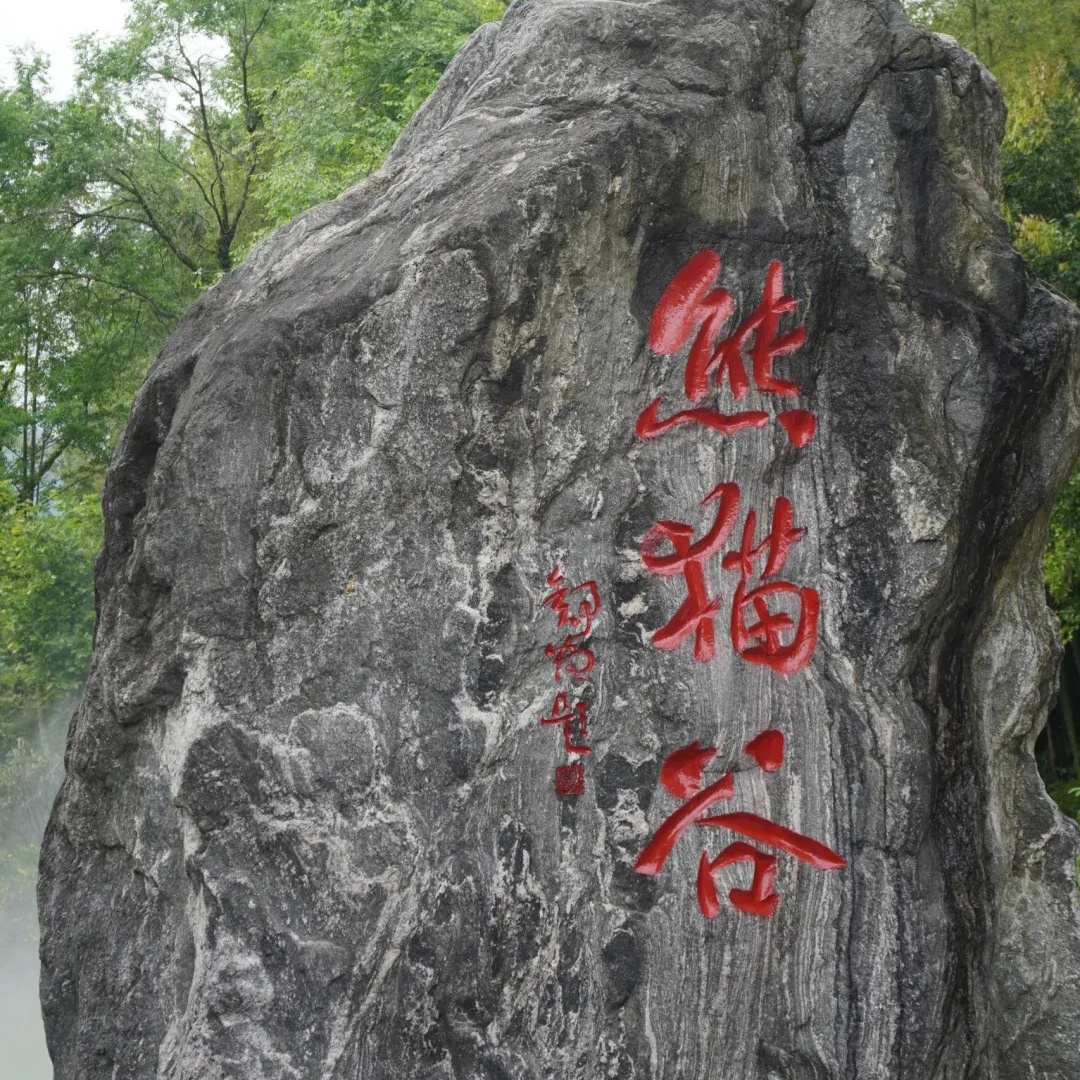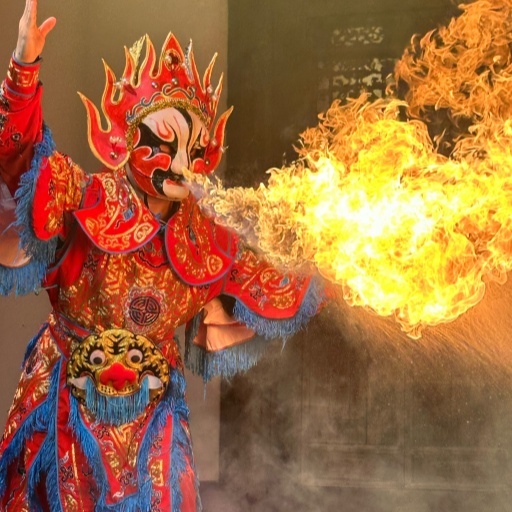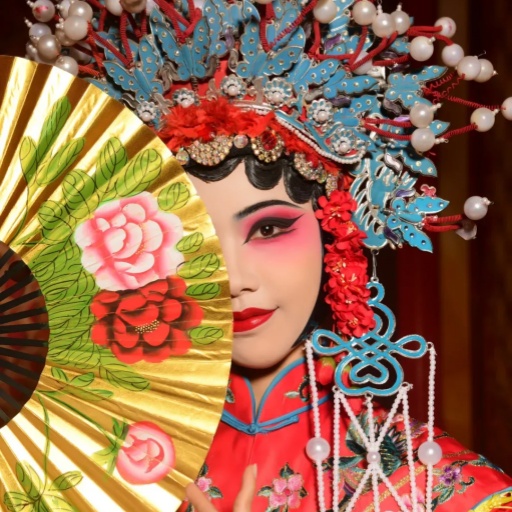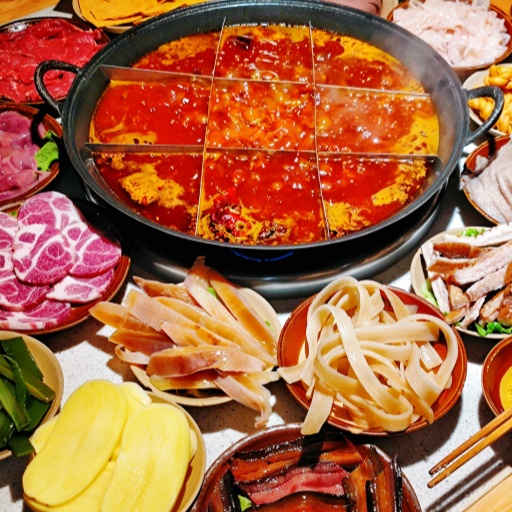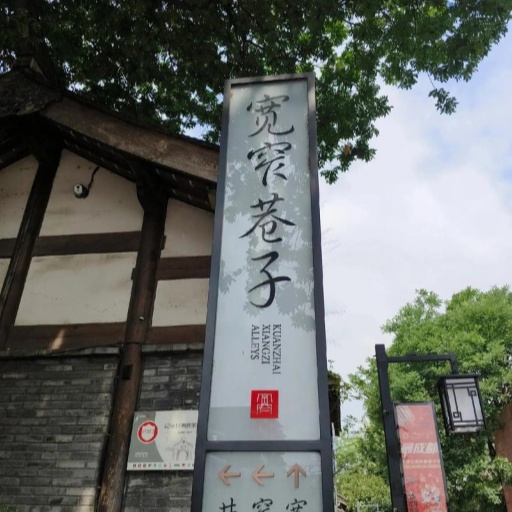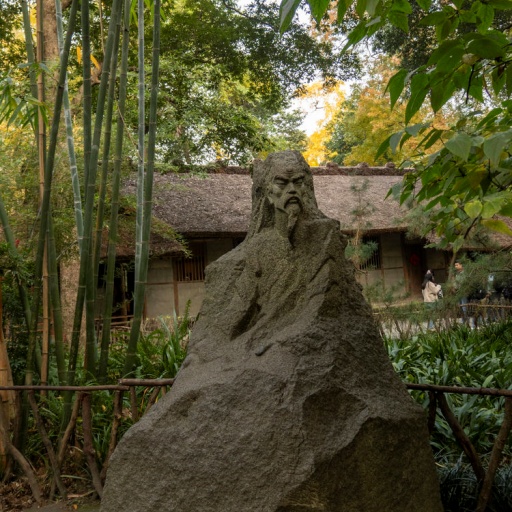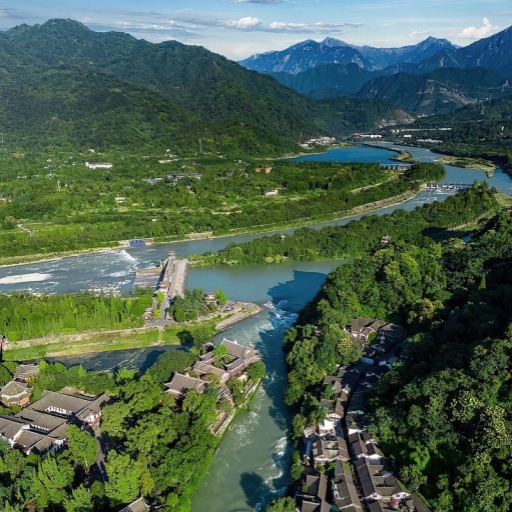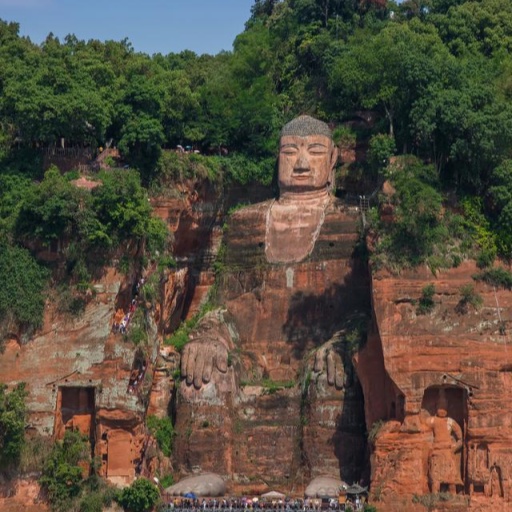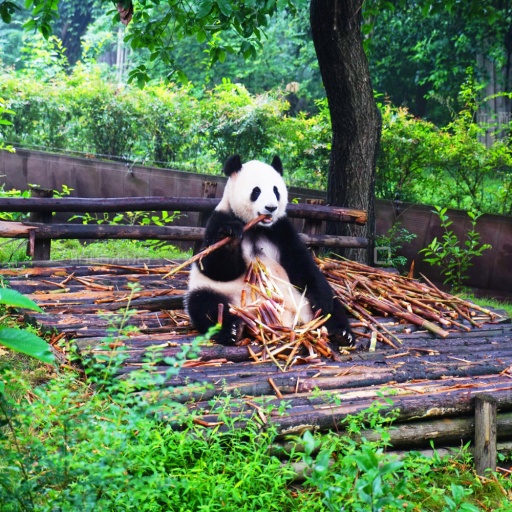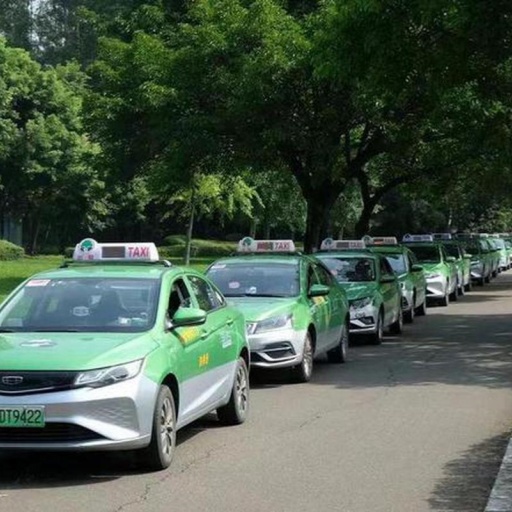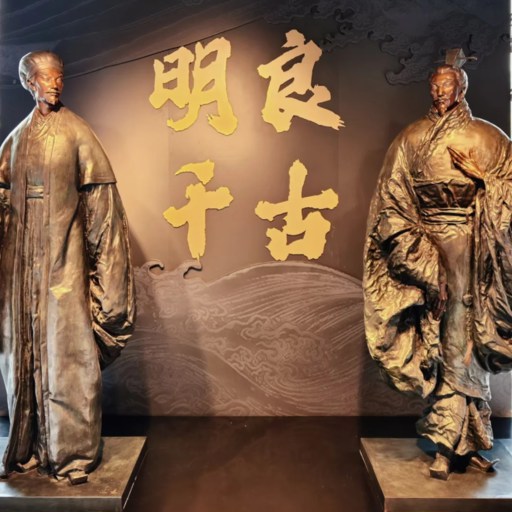Chengdu is one of China’s most inviting cities, packed with vibrant culture, spicy food, and, of course, adorable giant pandas. When you think about top Chengdu tourist attractions, it’s impossible not to picture the famous panda reserves. But this city offers so much more. From historic alleys filled with local life to world-class Sichuan opera, Chengdu blends tradition with a laid-back vibe. Visitors love the city’s mix of ancient charm and modern comforts. Whether you’re wandering through Kuan Zhai Alley or enjoying a fiery hotpot, you’ll feel the city’s unique spirit everywhere. The warmth of the locals makes every visit special, turning first-timers into repeat guests. For anyone curious about Chengdu tourist attractions, the city is a lively, unforgettable spot that combines nature, history, and culture in one neat package. It’s no wonder Chengdu is a must-see destination in China.
Where Can You See Pandas in Chengdu?
- Chengdu Research Base of Giant Panda Breeding
- Dujiangyan Panda Valley
- Bifengxia Panda Base
Chengdu Research Base of Giant Panda Breeding
The Chengdu Research Base of Giant Panda Breeding is one of the top spots among Chengdu tourist attractions. It’s a large, well-kept reserve where you can see over 100 giant pandas in a natural-like environment. The base focuses on protecting and breeding these adorable animals. Visitors stroll through bamboo groves, watching pandas munch on bamboo or laze around. It’s best to visit early in the morning when pandas are lively. Getting there is easy via bus or taxi from downtown Chengdu. Guided tours offer fun facts and insights into panda behavior. The panda nursery, where you see tiny cubs, is a crowd favorite. This place perfectly mixes education with fun, making it a must-see.
Besides pandas, the reserve also houses red pandas and other native animals. The site includes a small museum, gift shops, and cafes for a full day trip. Staff members are friendly and share interesting panda stories, making the visit personal. Comfortable shoes are a must here since you’ll walk a lot. A camera is handy too to capture those unforgettable panda moments.
Whether you travel solo or with family, this base ranks high on the list of Chengdu tourist attractions. It supports panda conservation while giving visitors an up-close look. If you have time for just one panda visit, this is the one to choose.
Torn between panda peace and neon heat? See which city fits you best in Chengdu vs Chongqing Essentials: Panda Calm or Mountain Fire for Short Trips?.
Dujiangyan Panda Valley (Panda Ark)
About an hour from Chengdu, Dujiangyan Panda Valley offers a different panda experience. This newer site is less crowded and surrounded by beautiful nature. Its standout feature is the panda volunteer program. Visitors can help feed and care for pandas under staff guidance. This hands-on role is rare among Chengdu tourist attractions and adds a special touch to your trip. The valley is quieter and more peaceful than the city base. Many panda lovers enjoy the closer interaction with the animals here.
Getting to the valley is easy by private car or tour group. There’s also a hotel nearby if you want to stay overnight. This spot suits visitors who want a deeper, more meaningful panda visit. Volunteering leaves lasting memories and a stronger bond with wildlife protection.For a unique panda encounter in the Chengdu area, Dujiangyan Panda Valley is a great choice.
Bifengxia Panda Base (Yaan)
Located about two hours from Chengdu in Yaan, Bifengxia Panda Base offers a more rugged, natural panda habitat. It’s popular with hardcore panda fans and those wanting to escape the city crowds. Set in a mountainous forest, the base allows pandas more space to roam. The site focuses on breeding and rehabilitation in a wild-like setting.
Visiting Bifengxia requires some hiking and stamina. It’s not as touristy, making it perfect for adventurers. You’ll see pandas of all ages in spacious enclosures, plus enjoy scenic mountain views. The trip is longer but rewarding for those who want an authentic wildlife experience.If you want to add a little adventure to your Chengdu tourist attractions list, Bifengxia is the spot. It’s quieter, less commercial, and deeply connected to nature.
Are There Fun and Cultural Things to Do in Chengdu?
- Face-Changing Sichuan Opera
- Dan Role in Sichuan Opera
- Hotpot in Chengdu
Face-Changing Sichuan Opera: Magic on Stage
Face-changing Sichuan opera is one of the most fascinating Chengdu tourist attractions, and it’s not just because of the flashy costumes. The real magic lies in how performers switch masks in the blink of an eye. It’s fast—so fast you might miss it if you blink. This performance art has been perfected over centuries, passed down through generations of skilled artists. The masks represent different emotions or characters, and changing them tells a story without saying a word. While it might look like magic, it's all about precise technique and years of practice. It’s seriously mind-blowing. Many travelers consider this performance one of the cultural highlights of visiting Chengdu.
What makes this show even better is its setting. The Shufeng Yayun Teahouse, located inside Chengdu Culture Park, offers an intimate and traditional space to enjoy the opera. It’s not just about the show—you’re surrounded by local history, architecture, and the smell of jasmine tea. You can sip hot tea, snack on local treats, and watch the action up close. The venue itself feels like stepping back in time. Plus, the opera isn’t just face-changing. There’s also fire-breathing, acrobatics, and comedic sketches. It’s like a mini variety show wrapped into one vibrant hour.
When planning your Chengdu itinerary, catching this performance should be high on your list of chengdu tourist attractions. Locals will tell you that no trip to the city is complete without seeing it at least once. And because the shows are so popular, it’s wise to reserve tickets ahead of time—especially during holidays or peak travel months. The experience is short enough to fit into any evening but impactful enough to stay in your memory long after. Whether you're traveling solo, with friends, or as a family, this cultural gem is both entertaining and eye-opening. It’s a rare chance to see a centuries-old tradition brought to life with style and flair.
Spicy Nights: Hotpot in Chengdu Is More Than Just a Meal
Among chengdu tourist attractions, hotpot stands out because it combines flavor with experience. The meal starts with a big pot of bubbling broth, split into spicy and non-spicy sections if you're unsure about the heat. Then comes a parade of raw ingredients—beef slices, lotus root, mushrooms, tofu, and local specialties like duck blood or rabbit kidney. Each bite cooks quickly, and dipping it into a custom sauce adds another layer of flavor. You mix your own sauce with garlic, sesame oil, cilantro, and soy sauce, making each bite unique. Locals often debate the best sauce combo, and it’s a fun part of the meal.
“I was a bit nervous about the spice at first, but once I tried it, I realized hotpot is as much about sharing and fun as it is about flavor.”
One of the best things about hotpot is how it brings people together. Everyone shares the same pot, passing plates around and cooking for one another. The spicy broth, loaded with Sichuan peppercorns and red chili, numbs your mouth in the most satisfying way. And if you need a break from the heat, take a sip of sweet soy milk or munch on a crispy fried dough stick. The rhythm of dipping, waiting, tasting, and talking creates a night full of good vibes and full bellies.
Even if you're not used to spicy food, don’t skip this must-have meal. Many restaurants now offer "yinyang" pots, where one side is fiery red and the other is mild or herbal. That way, everyone at the table finds something they can enjoy. Trying Chengdu hotpot isn’t just for the brave-hearted spice lovers—it’s for anyone who wants to dive into the heart of Sichuan culture. The mix of heat, laughter, and community turns dinner into something unforgettable. So when you're mapping out chengdu tourist attractions, make sure to leave space for a hotpot night. It might just be the best meal—and moment—of your journey.
What Are the Most Iconic Historical & Cultural Attractions in Chengdu?
- Kuan Zhai Alley
- Du Fu Statue
- Du Fu Thatched Cottage
Kuan Zhai Alley: A Blend of Tradition and Lifestyle
Step into Kuan Zhai Alley, and it feels like time slows down. Located right in the heart of the city, this historic block reflects the soul of Chengdu. With over 300 years of history, the alleys preserve Qing Dynasty architecture and a slower, more elegant pace of life. The “Kuan” (Wide) Alley shows off old courtyard homes, while the “Zhai” (Narrow) Alley holds tea houses and small museums. These streets aren't just pretty—they’re living snapshots of what makes Chengdu tourist attractions so beloved.
Now, don’t expect just history here. Walk further in, and the atmosphere shifts. Modern coffee shops, indie bookstores, and artisan boutiques blend into the traditional setting. The sound of traditional string instruments mixes with indie rock from a nearby bar. It’s this contrast that locals adore. Some say it’s where Chengdu’s old soul meets its modern rhythm. Sit in a courtyard café with a bowl of noodles, and you'll feel why people say Chengdu life is meant to be savored, not rushed.
Locals use these alleys too. You’ll see elderly men practicing tai chi in the mornings. Kids chase bubbles while parents sip jasmine tea. Vendors sell spicy rabbit heads next to hip design stores. Kuan Zhai isn’t just one of the most visited Chengdu tourist attractions—it’s where daily life unfolds. Whether you're into photography, snacks, or simply soaking up local culture, this spot never disappoints. And at night, with the lanterns glowing, it becomes pure magic.
Du Fu Thatched Cottage: Where Poetry Meets Nature
Tucked away in Chengdu’s western suburbs lies a quiet treasure: Du Fu Thatched Cottage. This historic site honors one of China’s most celebrated poets, Du Fu, who lived here during the Tang Dynasty. He wrote over 240 poems under its thatched roof. His words captured war, nature, and everyday struggles with raw honesty. Today, the cottage stands as a peaceful escape—a poetic retreat that sets itself apart from other Chengdu tourist attractions.
The grounds feel more like a garden than a museum. Bamboo groves rustle in the wind. Stone bridges cross koi-filled ponds. Classical pavilions hold calligraphy and painting displays. The layout mimics a traditional scholar’s retreat, blending manmade beauty with nature’s calm. The Poetry Corridor, filled with engraved verses, adds quiet elegance to the walk. Here, it's easy to forget you’re still in a major city.
Visitors usually follow a circular route. Start at the reconstructed cottage, then move toward the museum hall. Continue through the gardens, stopping at Du Fu’s statue for a photo. Avoid weekend crowds by going early on weekdays. A guided tour helps make sense of the historical context. If you love Chinese literature, or just need a breather from Chengdu’s lively street life, this spot will stay with you. Among Chengdu tourist attractions, few places offer such a quiet, meaningful pause.
What Are the Best Day Trips from Chengdu?
- Dujiangyan
- Leshan Giant Buddha
- Bifengxia Panda
Dujiangyan: Engineering Marvel with Natural Beauty
Dujiangyan ranks high among popular Chengdu tourist attractions near the city. Built over 2,000 years ago, this irrigation system still works today. It’s why Chengdu has fertile land and avoids major floods. Beyond history, the area’s scenery draws just as much attention. Lush hills, temples, and walkable trails make it a favorite among both locals and tourists. On a good day, you’ll see kids playing by streams and elders offering incense.
Not far from Dujiangyan lies Mount Qingcheng, a key Taoist site. With its peaceful temples and shaded paths, it adds spiritual calm to your trip. The two spots pair perfectly for a one-day getaway. Together, they showcase how nature and ancient wisdom coexist beautifully here. For those wanting more than downtown Chengdu tourist attractions, this day trip offers something deeper and more serene.
Getting here is easy. Hop on a fast train from Chengdu—it takes under an hour. Once you arrive, you’ll need to walk a bit, so wear comfortable shoes. The site is family-friendly, clean, and filled with snack vendors. Plan at least half a day, or longer if you explore nearby areas. Dujiangyan offers history, peace, and stunning views all in one.
Leshan Giant Buddha: Awe, History, and a Giant Smile
The Leshan Giant Buddha is one of the most jaw-dropping Chengdu tourist attractions. Standing 71 meters tall, this cliffside statue has watched over three rivers since the Tang Dynasty. Locals believe it helps control floods and brings good fortune. First-timers often gasp at the size—just its toes are taller than most people.
You can view the Buddha from two angles. From the river, a boat gives the best full-body view. On land, you hike up and walk beside its massive head. Along the way, you’ll pass ancient carvings, active temples, and incense-filled courtyards. The vibe here mixes spirituality, history, and quiet wonder in a truly special way. Among Chengdu tourist attractions, few are this grand and peaceful.
Traveling from Chengdu takes about two hours by train or car. Morning visits are best—cooler air, smaller crowds, and softer light for photos. Be sure to bring water and wear sturdy shoes. Around the site, you’ll find snacks like sweet rice cakes and spicy tofu. With a little extra time, explore Leshan city—it’s cozy, walkable, and full of character.
Bifengxia Panda Base: A Day with Pandas and Nature’s Charm
If you love wildlife and nature, Bifengxia Panda Base is definitely worth considering when visiting Chengdu. Located about two hours from downtown Chengdu, this panda reserve offers a close-up experience with the adorable giant pandas. Unlike the busy city zoos, Bifengxia provides a more natural and spacious environment for these gentle creatures. Here, you can watch pandas play, eat bamboo, and even see baby pandas learning to climb trees. It’s a must-visit for anyone curious about China’s national treasure.
Besides the pandas, the base is surrounded by beautiful bamboo forests and clear mountain streams. Walking through the trails feels refreshing and peaceful, making it a great spot to escape the city’s hustle. The fresh air and green scenery add to the calm vibe, so it’s perfect for families, couples, and solo travelers. Don’t forget to bring your camera — the photo ops with pandas are unbeatable!
Getting to Bifengxia is simple. You can take a bus or hire a private car from Chengdu. The roads wind through scenic hills, setting the tone for a relaxing day. Wear comfortable shoes because you’ll walk quite a bit around the reserve. There are snack stalls and small shops near the entrance, but packing some water and light snacks is wise. Plan to spend at least half a day here to fully enjoy the pandas and the serene surroundings. Bifengxia Panda Base offers a unique blend of wildlife wonder and natural beauty, making it a highlight among Chengdu tourist attractions.
- Chengdu Metro Map
- Chengdu Taxis
- Hotel Environment in Chengdu
Best Times to Visit: Weather, Festivals, and Crowd Levels
Planning your trip around the right time can make or break your visit. Spring (March to May) and autumn (September to November) are ideal. The skies stay clear, the air feels fresh, and the parks burst with color. Summer is hot and sticky, while winter tends to be gray and damp. Still, each season brings something unique to Chengdu tourist attractions. For instance, spring flowers brighten places like People’s Park and Wangjiang Pavilion. In autumn, the city’s ginkgo trees turn gold, creating postcard-perfect walks through local neighborhoods.
Festivals also shape the vibe of the city. During Chinese New Year, Chengdu explodes with red lanterns, fireworks, and temple fairs. Expect crowds at major Chengdu tourist attractions, but also get a deeper look into local customs. If you're into spicy food, plan around the Hotpot Festival in winter—it’s delicious and wild. Meanwhile, the Dujiangyan Water-Releasing Festival in April mixes ritual with river culture. These events offer something regular visits don’t. They’re loud, colorful, and full of life.
To avoid large tourist groups, travel mid-week and steer clear of national holidays. Weekends tend to crowd up places like Wide and Narrow Alleys or the panda bases. Booking your top attractions in advance helps too. Some sites offer timed entry, so you’ll skip the worst of the queues. With just a bit of planning, you’ll have smoother access to the best Chengdu tourist attractions without the stress.
Budgeting and Booking: Travel Smart in Chengdu
Worried about costs? Chengdu is surprisingly affordable. You’ll find hostels from ¥80 a night and stylish boutique hotels around ¥300. Public transport is cheap, fast, and clean—metro rides usually cost less than ¥5. Many Chengdu tourist attractions, like Jinli Street or Sichuan University’s old campus, don’t even charge entry. Others, like the panda base or Qingcheng Mountain, have small entrance fees that are totally worth it. Moreover,Traveling independently is cheaper than joining a Tour,so it is important to plan your Chengdu panda tour.
For smart bookings, use apps like Ctrip or Fliggy—they show prices in English and support foreign cards. Want to ride the high-speed train to Leshan? Book early, especially on weekends. The same goes for theater shows, especially the face-changing opera. Prices vary, but even high-end performances rarely go over ¥300. When planning day trips from Chengdu, join group tours to save time and cash.
Food-wise, Chengdu is heaven. You can enjoy a full hotpot meal for ¥60 per person or grab street snacks like rabbit head or cold noodles for under ¥10. Budget about ¥100–¥200 daily for meals, transport, and entry tickets. That’s enough to hit the top Chengdu tourist attractions while still enjoying good eats and smooth rides. Basically, your wallet breathes easy here.
Reference
Frequently Asked Questions (FAQs)
Q: Why do people go to Chengdu?
A: People go to Chengdu for the chill vibes, amazing food, and pandas. The city mixes ancient culture and modern charm so naturally. Travelers love how easy it is to slow down there. Street life feels real and unfiltered, which makes exploring fun. Chengdu tourist attractions are top-tier, from historical sites to panda bases. You can visit temples in the morning, eat hotpot at noon, and watch Sichuan opera at night. The food alone pulls people in—think spicy, bold, and full of flavor. Also, people are just warm. Locals always help, whether you’re lost or looking for snacks. The tea culture is strong, so you’ll see people relaxing in parks everywhere. Plus, the city isn’t just for leisure. Nature lovers head to nearby mountains, and history buffs dive into its ancient roots. Even rainy days have charm in Chengdu. If you want to avoid stress and enjoy real Chinese life, this place checks every box. That’s why many first-time visitors end up returning.
Q: What is Chengdu famous for?
A: Chengdu is famous for giant pandas, spicy food, and laid-back life. Most folks think “pandas” first, and that’s fair—the city has world-class panda centers. But there’s more. Chengdu tourist attractions go beyond zoos and parks. The food scene is wild—people line up for hotpot, mapo tofu, and street snacks. Locals say if it doesn’t make you sweat, it’s not real Sichuan food. Besides eating, folks love the city’s calm pace. People drink tea outdoors and play mahjong all day. Add in historic temples, Taoist mountains, and lively alleys, and you get a cultural mix that’s hard to beat. Chengdu is also known for preserving ancient arts. You can still see face-changing opera and traditional instruments performed live. It’s also a gateway to Sichuan’s natural beauty. Travelers start here before heading to the mountains or Tibetan areas. So really, Chengdu’s fame comes from how it blends nature, culture, and flavor.
Q: How many days do you need in Chengdu?
A: Three to five days gives you a solid Chengdu experience. With three days, you can see pandas, try hotpot, and visit top Chengdu tourist attractions. That includes Kuan Zhai Alley, Jinli Street, and Wuhou Temple. You’ll also have time for Sichuan opera and a slow tea session. If you’ve got five days, you’re in luck. That gives space for day trips to Leshan or Mount Qingcheng. You can fit in the Du Fu Cottage and maybe spot wild monkeys in the parks. The good thing is, Chengdu isn’t rushed. You won’t feel like you’re racing around. Instead, each day flows gently into the next. Some travelers stay longer without planning to. The city just draws people in. Even doing nothing feels like part of the journey. So if you love food, culture, and relaxing with locals, give Chengdu more time. It’s not about how fast you go—it’s about soaking in the vibe.
Q: How do I get from Chengdu Airport to the city?
A: Getting from Chengdu Airport to downtown is super easy. The airport’s full name is Chengdu Tianfu International Airport. It’s about 50 kilometers from the city center. First, you can take the airport express train. It’s clean, cheap, and runs often. The ride takes around 35 minutes to South Railway Station. From there, grab a metro or a cab. Second option is the airport shuttle bus. It stops at major hotels and transport hubs. The ride costs more time but less effort. Third, you can just call a Didi—the Chinese version of Uber. It’s super convenient if you have luggage or land late. Fares vary but are usually reasonable. Taxis line up at the official stand, so don’t worry about scams if you follow the signs. Finally, if you stay at a high-end hotel, ask about airport pickup. Many offer it free or at a flat rate. Whether you're heading to Chengdu tourist attractions or just to your hotel, options are plenty. Just pick the one that fits your style and budget. No matter what, you’ll hit the city without stress.
Q: Is Chengdu China expensive?
A: Chengdu isn’t expensive by big-city standards. Actually, it’s pretty budget-friendly. You can eat out for less than 30 yuan and feel full. Hotpot, noodles, snacks—everything feels like a good deal. Even at popular Chengdu tourist attractions, entry tickets are affordable. Many places like temples and parks charge 10–50 yuan. Public transport is cheap too. Metro rides cost around 2–6 yuan depending on distance. Taxis start at about 9 yuan. Hotels range from backpacker hostels to fancy riverside hotels. If you’re mid-range, you’ll find a comfy room for 300–500 yuan per night. Local tea houses charge maybe 20 yuan for a whole afternoon. Street food snacks cost even less. Of course, if you splurge on high-end hotpot or designer shopping, your budget will feel it. But overall, Chengdu lets you live well without breaking the bank. Whether you’re here short or long term, your money stretches far in this city.
Q: How much does a meal cost in Chengdu?
A: A meal in Chengdu can be dirt cheap or fancy. Most local joints serve a filling meal for 20–40 yuan. That includes noodles, rice dishes, and snacks. Street food is even cheaper. You can eat for 10 yuan if you’re okay with a baozi and soy milk. Hotpot costs more, especially if you add seafood or premium meats. A hotpot dinner might run you 100–150 yuan per person. Still, that’s when you go big. Small hotpot places charge half that. Western food is pricier. A pizza or burger meal can cost 80–120 yuan. But it’s all optional—local eats are where Chengdu shines. Also, portions are big, so you often have leftovers. If you eat near Chengdu tourist attractions, prices might be a bit higher. But head a few blocks away, and things drop fast. So it’s easy to eat well on any budget in this city.
Q: Where do foreigners live in Chengdu?
A: Most foreigners in Chengdu stay in a few main areas. Tongzilin is super popular—it’s peaceful, green, and full of Western comforts. You’ll find bakeries, bars, and plenty of expats. Apartments there are modern and close to international schools. Next is Kehua North Road. It’s near Sichuan University and full of students and language learners. Lots of short-term travelers pick this spot too. The area feels lively and affordable. Another hotspot is the Chunxi Road area. It’s central, close to shopping, and great for city lovers. Some foreigners also live near Gaoxin District, Chengdu’s tech hub. It’s clean and quiet, with new buildings and wide streets. No matter the area, metro access is key. Most foreigners choose spots close to major Chengdu tourist attractions and food streets. If you’re into quiet parks, try Huanhuaxi. If you love bars and nightlife, Yulin might be your jam. Just depends on your vibe.
Q: Do they speak Mandarin in Chengdu?
A: Yes, people in Chengdu speak Mandarin, but with a twist. The local dialect is called Sichuanese or “Sichuanhua.” It’s a branch of Mandarin but with a strong accent and some slang. Locals speak it fast and with musical tones. If you speak standard Mandarin, you’ll still understand most things. But expect to hear local flavor everywhere. That said, younger people and workers at Chengdu tourist attractions usually speak clearer Mandarin. In hotels, cafes, and metro stations, basic Mandarin works fine. And in tourist areas, signs often come with English translations. If you’re worried, translation apps help a lot. Locals are friendly and patient. They’ll use gestures or draw things if needed. So even if you don’t speak a word, you’ll still get by. And honestly, trying a few Mandarin phrases goes a long way. People smile when they see you try—it’s part of the fun.
Q: When to visit Chengdu?
A: The best time to visit Chengdu is spring or autumn. From March to May, the weather is soft and flowers bloom everywhere. You’ll enjoy walking in parks, sipping tea outside, and visiting Chengdu tourist attractions without breaking a sweat. October and November are also great—clear skies and cool air make everything better. Summer, from June to August, gets hot and humid. The upside? It’s fruit season and pandas are super active early mornings. Winter’s fine too, especially if you want to eat hotpot nonstop. It rarely snows in Chengdu, but it can get foggy and damp. Festivals are also something to plan around. The Lantern Festival in February lights up the city. And Dragon Boat Festival has rivers buzzing with races. If you hate crowds, skip national holidays like “Golden Week” in early October. So check your vibe—flowers, food, or peace—and pick your time.
Q: What is the name of one of the largest tourist attractions in Chengdu China?
A: One of the largest and most famous Chengdu tourist attractions is the Chengdu Research Base of Giant Panda Breeding. Locals just call it the Panda Base. It’s huge, green, and full of sleepy black-and-white fluffballs. The place is more than just a zoo. It’s a world-famous conservation center. You can see baby pandas in incubators and watch older ones munch bamboo. There are also red pandas, peacocks, and swans walking around. The park has hills, lakes, and shady paths—great for wandering. Best time to visit? Early morning. Pandas nap a lot, so mornings are when they eat and play. Tickets are cheap, and lines are long, so book ahead. It’s about 30 minutes from downtown by cab or metro. Every Chengdu trip should include this spot. Whether you’re 6 or 60, it’s pure joy.
Q: How do I go to Chongqing from Chengdu?
A: Getting from Chengdu to Chongqing is super easy. Most travelers take the high-speed train. It runs almost every 30 minutes and takes around 1.5 to 2 hours. Tickets range from 120 to 220 yuan depending on the class. Trains leave from Chengdu East or South stations and arrive at Chongqing North or West. Stations are clean and easy to navigate. Bring snacks, though—train food isn’t great. You can also take a long-distance bus, but it’s slower and less comfy. For more freedom, some people drive. The highway between the cities is smooth, but tolls and traffic add time. If you’re flying, direct flights take 1 hour but add airport time. Most folks prefer the train—it’s fast, scenic, and drops you right downtown. So if you’re planning to see both cities, start with Chengdu tourist attractions and zip to Chongqing after. It’s a quick ride between two foodie capitals.
Want more China travel ideas? Check out my city guides on Beijing, Shanghai, Guangzhou, and Chengdu.

